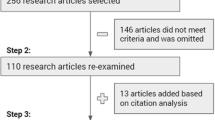Abstract
A quality characteristics linkage (QCs-linkage) model based quality problem processing framework is proposed on the basis of complex product development in Chinese industry practice. To describe the relationships among quality characteristics, a concept named “linkage” is defined and the QCs-linkage model is introduced including linkage network and linkage matrix. Based on the QCs-linkage model, a quality problem processing framework is put forward, in which the quality problem is analyzed and handled in the granularity of components and characteristics. The component function flow matrix is adopted to describe component relationships, based on which the abnormal component and quality problem analysis space are determined. A variation cost oriented key quality characteristic identification algorithm is given and the QCs-linkage model is constructed. Then the quality problem is handled with source-targeted and non-source-targeted strategies. The following part discusses methods of quality problem prevention based on the component linkage degree and similarity degree. Finally a case of a single-cylinder reciprocating engine study presented in this paper indicates that the framework can provide support for the quality problem analysis.

























Similar content being viewed by others
References
Aerospace standard AS 9103. (2001). Variation management of key characteristic. PA: Warrendale.
Cheng, H., & Chu, X. (2012). A network-based assessment approach for change impacts on complex product. Journal of Intelligent Manufacturing, 23, 1419–1431.
China aerospace industry standard QJ3183-2003. (2003). tGuideline of quality problem close loop for aerospace product.
Clarkson, P. J., Simons, C., & Eckert, C. (2004). Predicting change propagation in complex design. Journal of Mechanical Design—ASME Transactions, 126, 788–797.
Cohen, T., Navathe, S. B., & Fulton, R. E. (2000). C-FAR, change favorable representation. Computer-Aided Design, 32, 321–338.
Duan, G. (2008). Quality problem processing model based on zero-remians principles for complex product development. Computer Integrated Manufacturing Systems, 14(1), 138–145.
Heywood, J. B. (1988). Internal combustion engine fundamentals. New York: McGraw Hill Higher Education.
Huang, C.-J., & Chuang, Y.-T. (2008). Supporting the development of collaborative problem-based learning environments with an intelligent diagnosis tool. Expert Systems with Applications, 35(3), 622–631.
ISO 9001:2008. (2008). Quality management systems-requirements. ISO.
Kaufman, J. J., & Woodhead, R. (2006). Stimulating innovation in products and services: With function analysis and mapping. London: Wiley.
Kuo, T., & Mital, A. (1993). Quality control expert systems: A review of pertinent literature. Journal of Intelligent Manufacturing, 4, 245–257.
Kwong, C. K., & Bai, H. (2002). A fuzzy AHP approach to the determination of importance weights of customer requirements in quality function deployment. Journal of Intelligent Manufacturing, 13, 367–377.
Lefever, D., & Wood, K. (1996). Design for assembly techniques in reverse engineering and redesign. In 1996 ASME Design theory and methodology conference.
Li, B., et al. (2002). Virtual prototyping engineering for complex product. Computer Integrated Manufacturing Systems, 8(9), 678–689.
Liang, B., & Cao, D. (2007). Fuzzy mathematics and its application. Beijing: Science Press.
Pahl, G., et al. (2003). Engineering design: A systematic approach. Berlin: Springer.
Sahebjamnia, N., Mahdavi, I., & Cho, N. (2010). Designing a new model of distributed quality control for sub-assemble products based on the intelligent web information system. Journal of Intelligent Manufacturing, 21, 511–523.
Shirwaiker, R. A., & Okudan, G. E. (2008). Triz and axiomatic design: A review of case-studies and a proposed synergistic use. Journal of Intelligent Manufacturing, 19, 33–47.
Simon, H. (1996). The sciences of the artificial (3rd ed.). MA: MIT Press.
Suh, N. P. (1990). The principles of design. New York: Oxford University Press.
Suh, N. P. (2001). Axiomatic design—advances and application. New York: Oxford University Press.
Tanaka, F., & Kishinami, T. (2006). STEP-based quality diagnosis of shape data of product models for collaborative e-engineering. Computers in Industry, 57(3), 245–260.
Tang, F. (2005). Data structure tutorial (2nd ed.). Beijing: BeiHang University Press.
Tang, X., Duan, G., & Chin, K.-S. (2007). Development and implementation of an integrated quality information system—a China experience. International Journal of Advanced Manufacturing Technology, 32, 608–616.
Tang, D., Qian, X., & Liu, J. (2008). Product design and development based on design structure matrix. Beijing: Science Press.
Thornton, A. C. (2004). Variation risk management: Focusing quality improvements in product development and production. NJ: Wiley.
Wang, Y., & Duan, G. (2011). Complex product design process model based on generalized characters evolution. Computer Integrated Manufacturing Systems, 17(12), 2562–2572.
Wu, D., Zhen, X., & Fan, X. (2012). A virtual environment for complex products collaborative assembly operation simulation. Journal of Intelligent Manufacturing, 23, 821–833.
Yang, F., & Duan, G. (2012). Developing a parameter linkage-based method for searching change propagation paths. Research in Engineering Design, 23(4), 353–372.
Yao, S. (2003). Quality problem closed loop in 4-dimensions and success at first time. Management and Practice, 4, 25–27.
Zhang, G., et al. (2011). Immune prevention and control model of key quality characteristics. Computer Integrated Manufacturing Systems, 16(11), 2475–2483.
Zhaocheng, Y. (2011). Internal-combustion engine design. Beijing: Machine Industry Press.
Zhong, J. (2007). Complex electromechanical system coupling design theory and method. Beijing: Machinery Industry Press.
Acknowledgments
This research is funded by Natural Science Foundation of China (No. 51175025) and National High-Tech. R&D Program of China (No. 2009AA04Z165).
Author information
Authors and Affiliations
Corresponding author
Rights and permissions
About this article
Cite this article
Duan, Gj., Wang, Y. QCs-linkage model based quality problem processing framework: a Chinese experience in complex product development. J Intell Manuf 26, 239–254 (2015). https://doi.org/10.1007/s10845-013-0776-4
Received:
Accepted:
Published:
Issue Date:
DOI: https://doi.org/10.1007/s10845-013-0776-4




